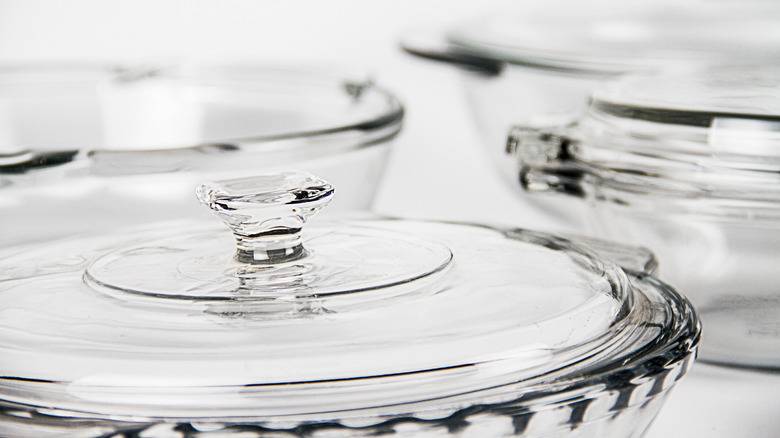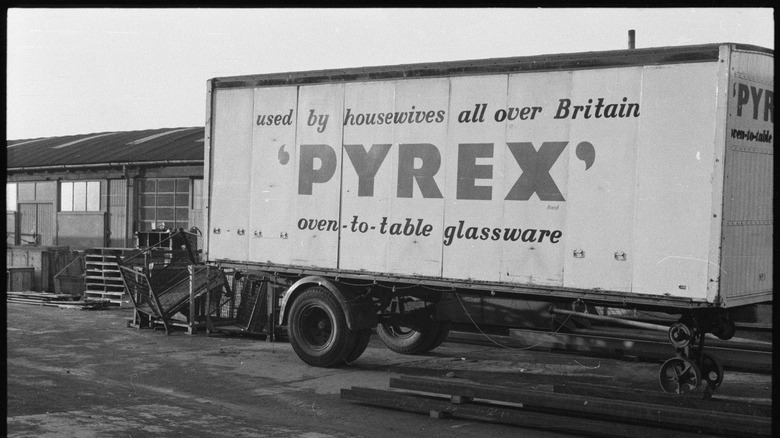The Invention Of Pyrex Began With Thomas Edison's Lightbulb
In today's world, saving leftovers is as easy as throwing them in a Pyrex container. But that hasn't always been the case. According to Next Day Flyers, prehistoric humans used whatever they could find to take food with them — namely, animal skin, shells, and gourds. And ancient Egyptians didn't exactly have access to the commercial packaging resources we use today, but they did start glass blowing to make food storage containers in 3500 BC. These methods of food preservation were extremely helpful, as they meant that people didn't have to hunt or gather fresh food for every meal.
Fast forward to today, and we have lovely, shiny glass Pyrex containers that can keep food fresh in the fridge or freezer. Although there are a wide variety of food storage brands on the market, Pyrex works especially well because it's made from borosilicate glass, which expands when it's warmed up and shrinks when it's cooled down, according to the Corning Museum of Glass. These qualities make it less likely to shatter, whether it's filled with hot soup or left in the freezer. And Pyrex is versatile in general — the brand's glass containers can go in the freezer, microwave, and oven, although you should never put Pyrex dishes in the broiler.
So how did we go from ancient Egyptian glass blowing to the all-encompassing, modern-day Pyrex containers? It turns out that lightbulb inventor Thomas Edison had something to do with it.
Thomas Edison's glass supplier invented Pyrex
It's common knowledge that Thomas Edison invented the lightbulb. In 1880, he received a patent for his incandescent lamp, which used a glass vacuum bulb made in his own glass-blowing shed, according to The Franklin Institute. But who provided Edison with the glass he needed? That came from Corning, a glass-making company that eventually became Edison's only glass bulb supplier.
Corning, which was founded in 1851, still exists today and has become synonymous with glassware innovation. According to Beyond the History Textbooks, Corning originally created borosilicate glass for railroad lanterns in 1909, which helped them resist shattering in extreme hot or cold conditions. But it was a non-Corning employee that inspired the creation of Pyrex in 1913. According to the company's history, Bessie Littleton, the wife of Corning physicist Dr. Jesse Littleton, baked a cake on a slab of Corning thermal-resistant glass. When the glass didn't bend or break in the oven, Corning physicists tweaked the process to remove lead, and Pyrex ovenware emerged in 1915, according to Made How. In the 1950s, Corning also debuted a new version of Pyrex, made out of the cheaper, but still heat-resistant, soda-lime glass (via Smithsonian Magazine).
So while Thomas Edison didn't directly invent heatproof storage containers, his lightbulb created a domino effect that led to the Pyrex we know today.

